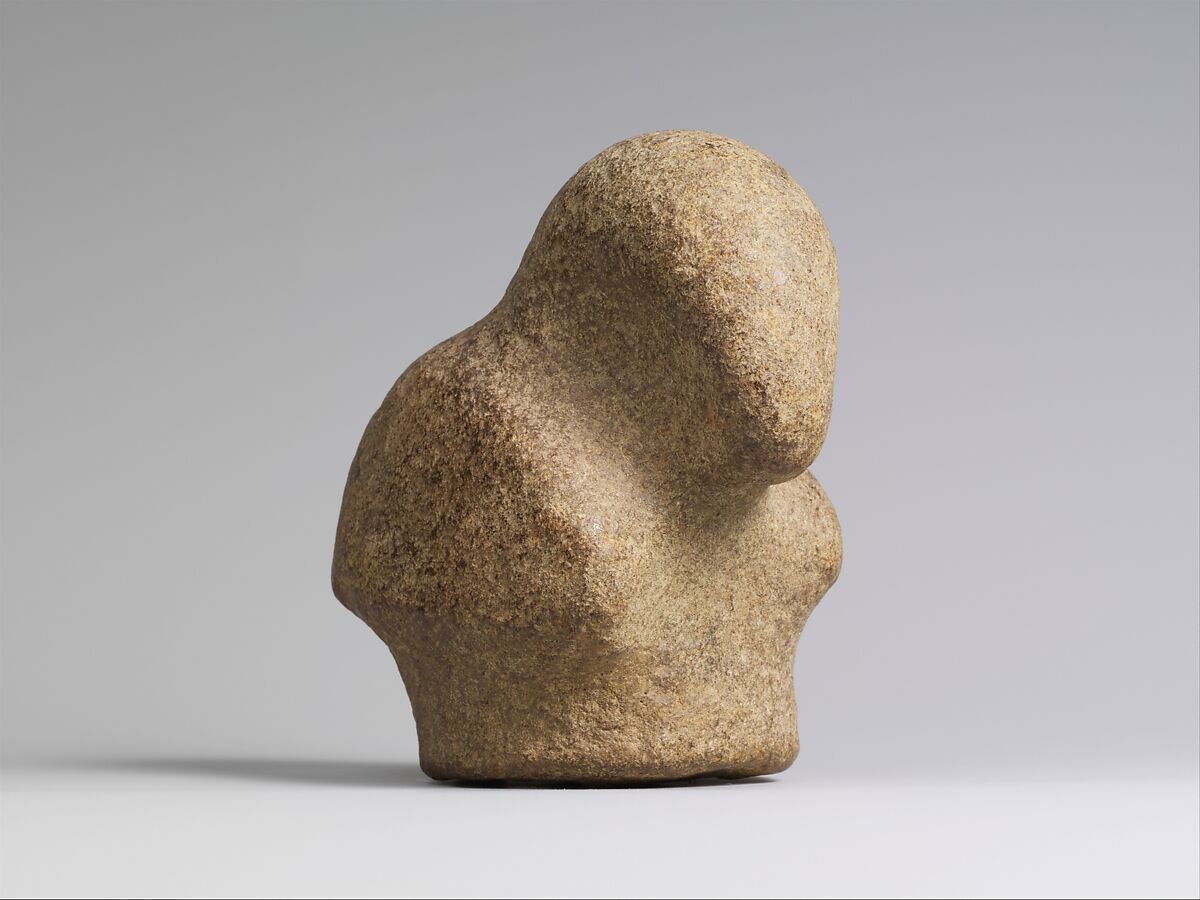Bird Stone Figure from Papua New Guinea

Annotation
This stone figure from ancient Oceania loosely shaped like a bird comes from an unknown ancient culture that lived in the highlands of Papua New Guinea. The figure, likely dated from around 1500 B.C.E., has unknown significance for the ancient culture, but stone figures found today have ritualistic significance and are considered supernatural for the current population living in the Mount Hagen area. Today, stone objects that are found are associated with fertility, usually for pigs and sweet potatoes, both important staples of the diet for the Enga people. Found stone figures are sometimes anointed with pig’s blood or placed in shrines to ensure the herd’s longevity. Though the origin and use cannot be conclusively known, these figures likely also had ritualistic significance for ancient populations and may have represented ancestors or totem species. Students can study the images of stone figures and consider the connection between the past and current ritualistic significance of such objects.
Credits
Bird Stone Figure from Papua New Guinea,1500 BCE-1600 CE, Metropolitan Museum of Art, https://www.metmuseum.org/art/collection/search/317803.